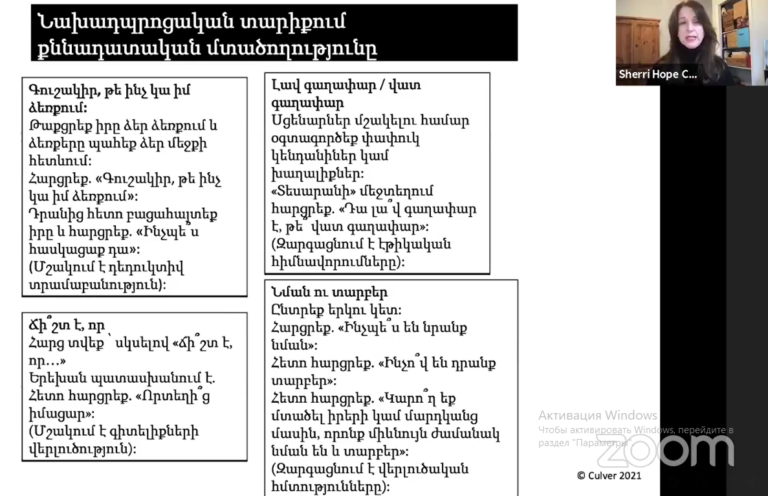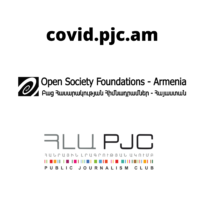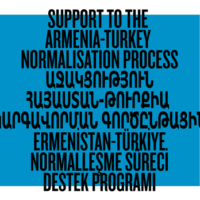
The importance of media literacy and critical thinking
- February 22, 2021
- Category: News
How much time do my students and children spend with media each day?
What is the connection between them and the media?
What is media literacy?
How to become more media literate media consumer and media creator?
How to teach children to make deliberate and competent choices in the huge stream of media content?
Nowadays, those are the main questions that disturb teachers and preschool teachers.
The answers to these questions were given by Sherry Culver, an American media expert, head of the Media Literacy Center at Temple University, USA, during the webinar on “The Importance of Media Literacy and Critical Thinking” organized by the Public Journalism Club.
Because of the coronavirus pandemic, the time we spend with the media has increased significantly. Life became online. It is important to understand that the time we spend with the media is equal to the effect it has on us.
Now, more than ever, you need to take a critical approach to the content you interact with in the media and take a conscious approach to your time spent there.
Media expert Sherry Culver noted that media literacy is an expanded concept, it is the ability to analyze, evaluate, create and act using all forms of communication.
“Literacy is the capacity to read and write, similarly, if we give an informal explanation for media literacy, it is the capacity to read to consume media, and to write to offer media content.”
Children and the media. Five questions behind media literacy
According to a media expert, media literacy is based on five questions, and when talking with children about media, you should definitely address those questions.
- Who is the author of this message?
No message or image appears for no reason.
- What is the format?
What creative tools are used to get my attention?
3․ What is the purpose of the message?
There are different reasons for creating content and you need to think about them. It is also necessary to remember that money is always the “key” goal.
4․ Who is the audience?
How can this message be perceived differently by different people?
- What is the content like?
How can the content of this message be perceived differently by different people?
Cognitive development in preschools
New media can be both fun and scary. You should keep that in mind!
Children aged 0-5 should also be taught how to choose the media content that is appropriate for them. It is necessary to explain that there are things that are not created for children of that age.
Children should be able to make deliberate choices about media content. For that reason, it is necessary to develop critical thinking by asking questions. after all, they are not only consumers, they are also creators of media content.
During the webinar, Culver also suggested games aimed at developing critical thinking.

“Look at the smartphone and its size. You are wrong if you think that it was created for adults. It is a wonderful toy for children. It looks like a big box full of colors and lights, a box where any action is done with just one touch of the finger, easily and quickly. We cannot completely control their presence there, but instead we can offer clear rules and formats” notes Sherry Culver.
Spending hours in front of a screen is not fun, just like cycling, running or eating all day long.
When it comes to children becoming conscious media consumers, Culver emphasizes the importance of parent and teacher being “role models”.
“Remember, they always follow us, our example, they copy everything we do. To explain how important it is to manage your media time, you can say, for example, it’s dinner time, I’m putting my phone away, or I’ve watched enough TV today, I need to turn it off.”
After all, the ability to switch the phone and put it aside is a wonderful ability.
If children saw something they shouldn’t have seen, something that was not meant for them and they got scared (it could be violence, sexual content, or a talking dog, as in case of Culver’s students), you need to be able to ask questions about what they saw, what scared them, try to draw their attention to something else, distract them and try to help to forget the images that negatively affected them.
In September 2020, the Public Journalism Club launched “Acting for Safer Online Environment: information literacy intervention for preschools” project, which is implemented with the support of the US Embassy.
This is the fourth webinar within the scope of the program and the second one with the participation of Sherry Culver. The next webinar with Sherry Culver will take place on February 26 of this year at 4:00 p.m.





